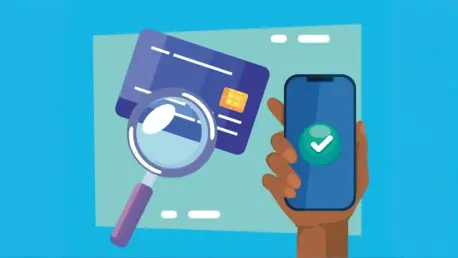Listen to the Article
Most banks pride themselves on speed. Moving money is now a commodity – push a button, funds appear. But convenience has become a gateway for fraud. In 2023, criminals stole more than £460 million through authorized push‑payment (APP) scams, with 76% of scams starting online and another 16% via telecommunications. Customers, regulators, and fintechs are all asking a simple question: why didn’t the bank check the name on the other end before sending the money?
Europe’s answer is the Verification of Payee (VoP) requirement. Under the EU’s Instant Payments Regulation, payment service providers in the euro area must implement a name‑check service by 9 October 2025, and those outside the euro area have until 9 July 2027. The European Payments Council’s scheme rulebook enters into force on 5 October 2025. In the UK, a similar scheme, Confirmation of Payee (CoP), has been mandatory since 2020 and will be fully enforced by October 2024, covering 99% of domestic transfers. Soon, name‑checks will be table stakes. The question is whether banks treat them as a compliance burden or a chance to fix deeper misalignments between systems, data, and human experience.
What Happens During a Name Check?
Payee verification cross‑checks the entered name with the account holder’s name. The service returns a match, close match, or no match status, prompting the customer when there is a discrepancy. It is free and mandated for all PSPs offering credit or instant transfers within SEPA. Banks must provide the check in near real time and cannot replace sanctions or due diligence checks. Implementing VoP, therefore, means building a responsive API that runs at payment initiation and gracefully handles edge cases such as slight name variations.
Why It Matters Now
Fraud is expensive, but so are operational failures. Treasury Intelligence Solutions estimates that 70% of payment exceptions stem from bad data and formatting errors, with rejection rates climbing as high as 30%. A name‑check layer reduces misdirected payments and the hidden costs of delays, penalties, and reconciliations.
Regulators are also shifting accountability. Under the UK’s scam reimbursement rules, banks will soon bear the cost of authorized push‑payment fraud, while the EU’s VoP mandate embeds name‑checking into law. Banks that adopt robust systems early can reduce losses and demonstrate that they protect customers proactively, not just reactively.
Navigating the Friction
Matching names is messy. Legal names, trading names, initials, and typos don’t always align, and exact matching triggers a flood of false “no match” warnings. The EU allows a close match status, but banks need fuzzy‑matching algorithms and high‑quality data to avoid unnecessary friction. Instant payments also mean checks must run in milliseconds across languages and formats, and because the service is free for users, banks must absorb the cost.
A Global Trend
Europe may be first to impose name‑checking across all account‑to‑account payments, but the momentum is worldwide. The United Kingdom’s Confirmation of Payee scheme has already proven effective. In the United States, calls to validate beneficiary names are growing as the Federal Reserve and the Treasury experiment with name‑verification APIs for government checks. Corporate treasurers and payors are also realizing that preventing mistakes is as important as stopping fraud: Treasury Intelligence Solutions notes that 70% of payment exceptions are caused by bad data and outdated account records. Internal barriers like fragmented ERP systems and siloed vendor records make it hard to verify payees. The new mandates push banks to clean up data and modernize payment infrastructure. For multinational banks, differences in deadlines and standards – such as between euro‑area and non‑euro PSPs – mean they must design solutions that work across regions and currency zones.
A Moment to Build Trust
Payee verification isn’t just a chore – it’s a chance to rebuild trust. Confirmation of Payee in the UK has already shown how name‑checks can reduce misdirected payments and APP fraud, covering 99% of domestic transfers. The EU expects VoP to deliver similar benefits and enhance customer confidence. Verified names also provide richer data for risk profiling and personalized services, and align with digital‑identity and open‑banking initiatives.
The Implementation Playbook
How do you implement payee verification without alienating your customers? Start with these principles:
Clean your data. Audit and standardize account names and details. Messy databases are the primary source of false mismatches.
Pick the right matching engine. Choose transparent fuzzy‑matching technology that handles nicknames, initials, and multiple languages.
Design for clarity. When there’s a mismatch, explain why and offer clear next steps instead of cryptic error codes.
Test and tune. Pilot the check with a small group, refine your logic, and track false‑positive rates before scaling.
Train your teams. Make sure frontline staff can help customers, and align risk, compliance, and technology teams on processes.
Communicate the value. Present name‑checking as protection rather than a hurdle, and align your efforts with broader initiatives like ISO 20022 and digital‑identity frameworks.
Measure the return. Track reductions in fraud losses, payment exceptions, and reimbursement claims. Use these figures to justify ongoing investment in data quality and verification services.
The Moment Is Now…
There will be no dramatic launch event for payee verification. When the VoP deadline arrives, customers will simply expect it to work. They won’t congratulate you for implementing it – but they will notice if you don’t. Treat this moment as a chance to rebuild your payments architecture with intention: clean up your data, invest in matching algorithms that reflect how people really name accounts, test and train, and communicate openly. Early adopters will reduce fraud, lower reimbursement costs, and stand out as trusted partners. Those who wait risk fines, lost trust, and hastily bolted‑on systems.
Fraud is evolving, but so are the tools to stop it. The banks that thrive won’t brag about speed alone; they’ll be the ones whose clients sleep soundly knowing the bank checked the name before sending a single euro – for everyone today around the world.Taking this leap now signals to clients that their security and long‑term trust matter more than shaving a few milliseconds off a transaction.









